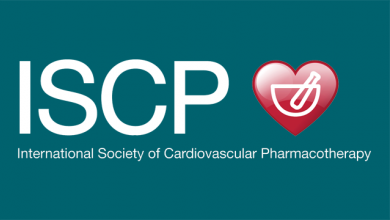Search results
Author(s):
Saagar Mahida
,
Frédéric Sacher
,
Nicolas Derval
,
et al
Added:
3 years ago
Atrial fibrillation (AF) is the most commonly encountered arrhythmia in clinical practice. The discovery that pulmonary veins (PV) play a prominent role in the pathogenesis of AF has revolutionised the management of AF. PV isolation has become the most widely used technique for treatment of paroxysmal AF. Since the initial discovery implicating PVs in AF pathogenesis, the mechanistic link between…
View more
Author(s):
Katerina Fountoulaki
,
Nikolaos Dagres
,
Efstathios K Iliodromitis
Added:
3 years ago
Heart failure (HF) is a feared endpoint for most cardiovascular diseases and is a major cause of morbidity and mortality. The worldwide prevalence of HF is between 2 and 3 % and rises sharply at around 75 years of age, so that the prevalence in 70- to 80-year-old people is between 10–20 %. With a 50 % 5-year survival rate, HF is predicted to be the leading cause of all morbidity by 2020.1,2…
View more
Author(s):
Shu Nakao
,
Kazuki Yanagisawa
,
Tomoe Ueyama
,
et al
Added:
2 years ago
Author(s):
Krisztina M Zsebo
,
Brian E Jaski
Added:
3 years ago
Despite important therapeutic improvements in pharmacological and device therapies, the prognosis for patients with advanced cardiovascular disease is poor, even with optimal pharmacological and device management. Heart failure continues to be a major cause of morbidity and mortality in the US. It is the leading medical cause of hospitalization and is expected to result in an estimated direct and…
View more
Anisotropic Cardiac Conduction
Author(s):
Irum D Kotadia
,
John Whitaker
,
Caroline H Roney
,
et al
Added:
3 years ago
Article
Author(s):
Rachel Lampert
Added:
3 years ago
The increased risk of drug-related torsades de pointes (TdP) and death in women taking ion-channel-active antiarrhythmic drugs was first described 20 years ago. In 1993, Makkar1 identified all case reports or case series of drug-related TdP, finding 332 patients described in 83 articles. The proportion of women versus men in these reported series was compared with the proportion of women versus…
View more
Author(s):
Gui-Rong Li
,
Chu-Pak Lau
Added:
3 years ago
Atrial fibrillation (AF) is the most common cardiac arrhythmia and the occurrence of AF increases with age. The prevalence of AF rises from 0.5% in people in their 50s to 5% in people over the age of 65 years. This rises to nearly 10% in the octogenarian population.1 AF is a major cause of morbidity and mortality, increasing the risk of death, congestive heart failure (CHF) and embolic phenomena,…
View more
3D Ultrastructure of the “Arrhythmogenic” Purkinje Fibre-ventricular Junction in Rabbit Hearts
Author(s):
Shu Nakao
,
Il-Young Oh
,
Luke Stuart
,
et al
Added:
3 years ago
Article
Author(s):
Zeljko J Bosnjak
,
David C Warltier
Added:
3 years ago
Cardiovascular disease is a major healthcare problem in the US. The presence of this disease significantly affects the outcome of both cardiac and non-cardiac surgery, and peri-operative cardiac morbidity is one of the leading causes of death following anesthesia and surgery. The considerable incidence of myocardial infarction, congestive heart failure, myocardial ischemia, or serious…
View more
Author(s):
Niels Voigt
,
Dobromir Dobrev
Added:
3 years ago
Atrial fibrillation (AF) is common and is associated with significant cardiovascular morbidity and mortality, with stroke being the most critical complication.1,2 Drugs presently used for AF therapy have major limitations, including incomplete efficacy and risks of life-threatening proarrhythmic events (antiarrhythmic drugs) and bleeding complications (anticoagulants).3 Non-pharmacological…
View more










